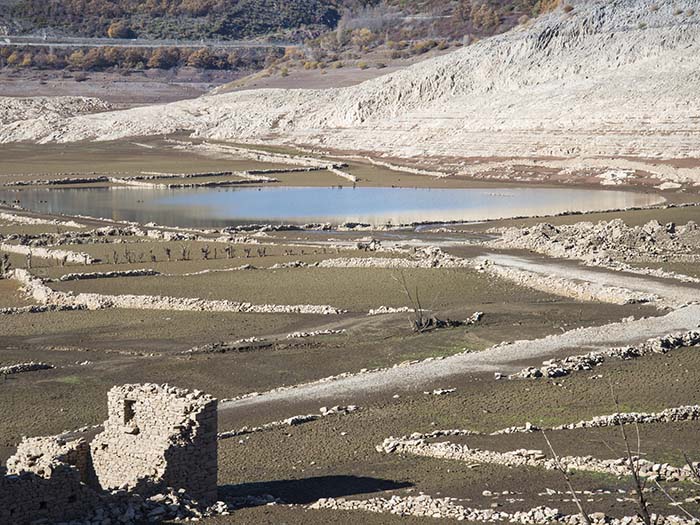3 Significant Ways Natural Disasters Impacted Insurance Around the Globe in 2022

Aon’s third quarter Global Catastrophe Recap, published in October 2022, focused on three significant global threats: Hurricane Ian, historic droughts and heatwaves in Europe, and extreme flooding in Pakistan.
Specifically, the report dove into the strain on Florida property insurers from Hurricane Ian. Next, the record-setting heatwaves across Europe have raised the specter of historic droughts. Finally, the authors analyzed social concerns stemming from the floods in Pakistan.
The overall cost of these natural disasters and others exceeded $227 billion through the end of the third quarter, according to the report. Of these losses, roughly $100 billion will be covered by public and private insurance, representing a 56% protection gap around the world.
Total losses related to the drought in Europe are approaching $20 billion. In the U.S., Hurricane Ian is likely to become one of the costliest natural disasters in history. And Australia’s record-setting east coast floods are the country’s most expensive event to date.
“While the protection gap of 56% [the portion of total economic losses not covered by insurance] might seem high, it is actually very low from a historical perspective,” said Michal Lörinc, head of catastrophe insight in Aon’s Impact Forecasting team.
“The reason why the protection gap is lower in 2022 is because the largest disasters affected areas with relatively good insurance coverage,” Lörinc explained. “For example, much of the economic losses from Hurricane Ian, the costliest disaster of the year to date, will be covered by public and private insurance entities.
“Similarly, we have observed more than $40 billion of economic losses from severe convective storm[s] this year so far, and most of the total is again covered by insurance, as these costly events occur predominantly in the United States, Europe or Australia. At the same time, flooding losses in countries with emerging insurance markets, such as China, were lower this year,” he added.
These numbers only represent the financial losses associated with these global catastrophes. The true cost is much higher when the loss of human life is included — the Pakistan and India floods caused more than 3,500 casualties, and more than 16,700 deaths are attributed to this year’s heatwave in Europe.
1. Long-Tail Losses from Hurricane Ian Strain Florida Insurers
The property insurance market in Florida could see additional strains from the long-tail losses due to Hurricane Ian.
These losses — from widespread wind damage, catastrophic storm surge coastal flooding and inland precipitation-induced flooding — combined to make Hurricane Ian the costliest event of the year to date and one of the most expensive tropical cyclones in recorded history, according to the report.
The long-tail loss development associated with natural disasters is likely to affect the Florida insurance market following Hurricane Ian. Lörinc described the factors leading to longer loss development: “The combination of factors — including loss creep, claims litigation, assignment of benefits, higher replacement costs and demand surge — contributes to multi-month or even multi-year loss development.”
All these factors are present to varying degrees in the Florida insurance market, potentially complicating loss development and extending claim settlement time.
An interesting development from Hurricane Ian was the inland flooding, which occurred in counties with low flood insurance uptake. Some inland counties affected by the flooding had NFIP take-up rates of 1 to 8%, according to the report. Contrasting this was the storm surge flooding in coastal communities that had a greater penetration of insurance coverage.
These extremes highlight the disparity in both insurance penetration and likely recovery time for the affected communities. Blue-tarped roofs are a common sight in many Florida towns even years after a devastating hurricane has struck.
2. Drought and Heatwaves Plague Europe
Europe experienced record-setting droughts and heatwaves this year, so much so that drought stones — large medieval rocks usually covered by river water — have been exposed across the continent. Dubbed “hunger stones,” the drought stones are engraved with words warning future generations that seeing them could signal despair. Droughts, ruined crops and mass starvation could accompany these harbingers of doom.
Two different heatwaves in Europe this summer exacerbated drought conditions and challenged resources. Several locations across Europe saw record-setting high temperatures, including Portugal, Wales, Scotland and the UK. The death toll from these two heatwaves is estimated at more than 16,700 individuals.
These heatwaves and resulting drought conditions set the potential for wildfires, and the flames followed. Above-average fire activity was reported across Europe; Spain reported the largest extent of burned area to date with nearly 741,000 acres burned.
Portugal and France also suffered large losses when a single catastrophic wildfire burned more than 49,400 acres in the Gironde department alone. Both the total number of fires and the cumulative burned area exceeded the long-term average this year — a trend that may continue due to the effects of climate change on severe weather.
“Heatwaves and droughts are among the natural perils that are likely to affect many regions of the world with increasing frequency and intensity. This is well documented in recent research, and studies that focus on heatwaves and drought exhibit the highest level of certainty in terms of conclusions,” Lörinc said.
“Moreover, the 2022 heatwaves in Europe were already assessed through a rapid attribution study, which suggested a higher probability of such an event happening under a changed climate.”
3. Historic Flooding in Pakistan
Pakistan suffered the effects of flooding across much of the nation in the third quarter. Melting glaciers and heavy monsoon rains caused floods that devastated communities throughout the country.
The direct losses from the floods were severe, but the indirect losses, such as malnutrition and diseases, also contributed to the nearly 1,700 fatalities and 13,000 injuries reported. The floodwaters also destroyed health facilities and infrastructure, leaving remaining hospitals overwhelmed.
The challenges in Pakistan are unlikely to be limited to this year. Pakistan is home to the largest concentration of glaciers outside the polar regions. And while these glaciers have given rise to the country’s rugged mountains and pastoral valleys, they also represent a threat to people and property.
Heavy glacier melting this year caused at least 75 glacial lake outburst floods and 90 flash floods in Northern Pakistan.
Above-average monsoonal rains contributed to the floods in Southern Pakistan, and the nation recorded its wettest July and August since 1961. With melting glaciers in the north, warming oceans to the south and unpredictable monsoons across the country, Pakistan faces the financial and physical risks of climate change every day.
The report ends with a hopeful nod toward resiliency, noting that smart rebuilding efforts could help mitigate the next wave of catastrophes. &










